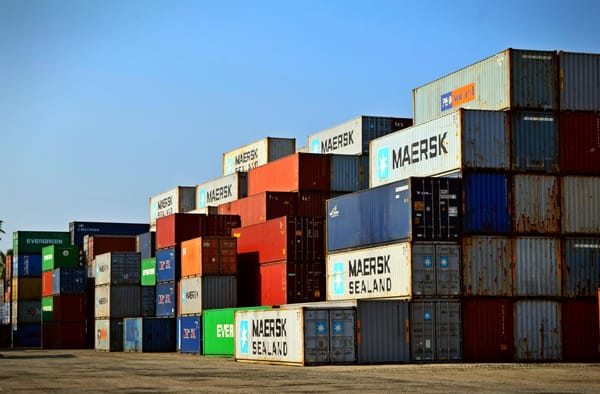Extracting Tables from PDFs with AI
Learn how to extract tables from PDFs using AI-powered tools like Airparser. Save time and automate your workflow with GPT-powered table extraction.

Extracting tables from PDFs is not always easy. Whether you’re dealing with invoices, financial reports, or product catalogs, pulling out structured data from a PDF can be tricky. Often, tables come in various formats or layouts, making manual extraction time-consuming and prone to errors.
In this article, we will explain why extracting tables from PDFs is challenging and how you can automate the process using tools like Airparser.
Why Tables in PDFs Are Hard to Extract
PDFs are designed to present documents in a fixed layout, making them look the same no matter where they are opened. This is great for sharing, but it causes problems when you need to extract data. Tables inside PDFs can have different structures, making it difficult to get clean, structured data out of them.
Here are some common challenges:
- Merged cells: Some tables have cells that span multiple rows or columns, which makes it harder to extract data properly.
- Complex layouts: Tables can include headers, footers, or irregular column widths.
- Unstructured data: Sometimes, the data inside the table is not well-organized, making it difficult to extract in a useful format.
These issues often require advanced tools for accurate data extraction. Manual copy-pasting can lead to errors and is a slow process, especially if you’re dealing with large documents.
Tools for Extracting Tables from PDFs
There are several ways to extract tables from PDFs, ranging from manual methods to fully automated solutions. Here are a few options:
1. Manual Copy-Pasting
The simplest way to extract data is by manually selecting the table and pasting it into Excel or Google Sheets. However, this method is slow and prone to mistakes, especially with complex layouts.
2. Software Solutions
There are software tools available that can extract tables from PDFs. Some work well for structured documents, but they often struggle with complex or unstructured data.
3. Automated Parsing Tools
Automated tools like Airparser use AI to handle more complex documents. They can recognize different table formats, even when the layout changes between PDFs. Airparser’s GPT-powered parsing engine can automatically identify and extract data from tables, making the process much faster and more accurate.
For more details on how Airparser compares to other methods, check out our guide on GPT-powered data extraction.
How to Extract Tables from PDFs with Airparser
If you regularly need to extract tables from PDFs, using a tool like Airparser can save you a lot of time. Here’s a simple step-by-step guide on how to use Airparser to extract tables:
Step 1: Upload Your PDF
Start by uploading your PDF document to Airparser. You can do this through the web interface or by forwarding the document to an inbox you’ve created in Airparser.

Step 2: Create an Extraction Schema
In Airparser, you can create a custom extraction schema. This means you can define the fields you want to extract from the table. For example, if you are working with invoices, you might want to extract columns like "Product Name," "Quantity," and "Price."

Step 3: Extract the Data
Once your schema is set up, Airparser will automatically scan the PDF and extract the relevant data from the tables. The GPT-powered engine can handle even complex tables with varying formats.

Step 4: Export Your Data
After the data is extracted, you can export it to Excel, Google Sheets, or use one of Airparser's integrations with Zapier or Make to connect the data to other apps. This makes it easy to automate your workflow.
If you’re curious about how Airparser handles complex data extraction, you can read more in our guide on automating data extraction using GPT parsers.

AI and GPT-Powered Table Extraction
One of the key advantages of using Airparser is its GPT-powered engine. This AI technology allows Airparser to handle documents with changing layouts, meaning you don’t need a strict template for each PDF. The AI adapts to different table formats, making it ideal for extracting tables from PDFs that come from various sources, like invoices from different vendors.
Many traditional tools rely on fixed templates, which can break if the layout of the PDF changes. With Airparser’s AI-driven approach, you can handle unstructured data more effectively, reducing errors and saving time.
For more about AI in document parsing, check out this article on using GPT for PDF data extraction.
Common Use Cases for Table Extraction
Extracting tables from PDFs is useful for many industries. Here are some common use cases where Airparser can help:
1. Financial Reports
Companies often receive financial reports in PDF format. Extracting the tables manually can be tedious. Airparser can automate this process and allow you to export the data directly into your accounting software.
2. Invoices
Invoices from different vendors can have varying formats. With Airparser, you can easily extract the relevant data like item descriptions, prices, and totals. For more information on parsing invoices, see our article on parsing invoices using GPT.
3. Product Catalogs
Extracting product information from PDFs like catalogs or order forms can take a lot of time. With Airparser, you can quickly pull out the product names, descriptions, and prices into a structured format.
4. Bank Statements
Extracting data from bank statements is another common use case. Airparser can help you automate the process, allowing you to export the data into Excel or CSV format. For more details, check out our guide on how to convert PDF bankstatements to Excel.
Conclusion
Extracting tables from PDFs can be a challenge, especially when dealing with complex layouts or unstructured data. However, using an automated tool like Airparser makes this task much easier. With its GPT-powered parsing engine and support for different document layouts, Airparser can save you time and improve accuracy. Whether you’re extracting data from invoices, financial reports, or product catalogs, Airparser can handle it all.
By automating table extraction with Airparser, you can focus on more important tasks and let AI do the heavy lifting.





